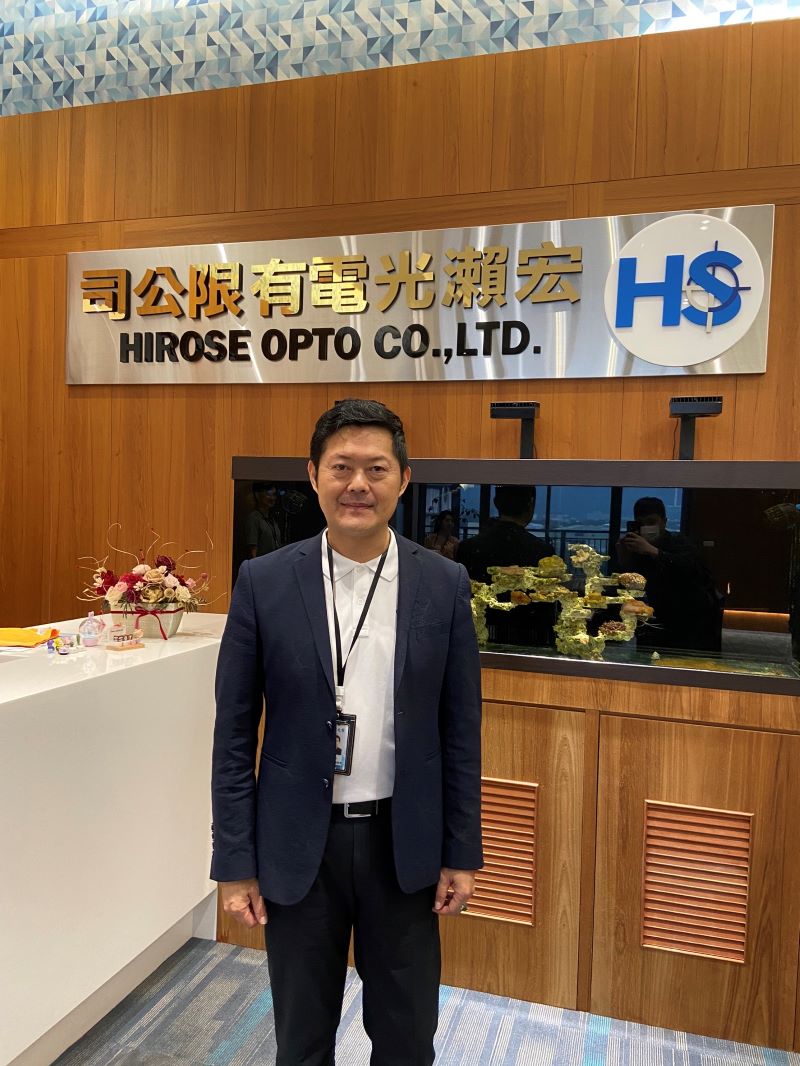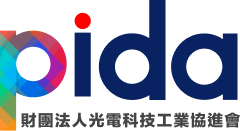
|
|
專訪宏瀨光電有限公司/營銷處 副總經理/許志帆
不斷突破舒適圈的光電業鬥士
宏瀨光電有限公司成立於2014年,公司現有員工152人;以小搏大,在競爭激烈的光電產業中,奮力求存。它所仰仗的,除了類似於一般公司的管理紀律外,更重視為客戶提供良好的產品品質和售後服務。以它開發AOI產品設備為例,能獲得多數大廠客戶好評的最強致勝關鍵,即是著重產品品質要夠好而且穩定、同時提供一流的售後服務。另外,隨著市場的變化,當它過去仰賴的面板獲利下滑之際,公司隨即轉型至利潤較佳的半導體相關產品領域。任何企業要走長遠之路,人才培育作法的推陳出新及導入AI人才和技術,都是立於不敗之地的必經途徑。
產品品質和售後服務夠好,自然獲得客戶青睞 宏瀨光電/營銷處副總經理/許志帆表示,以公司的觀點而言,產品品質要夠好、夠穩定,售後服務更要做得很好,即是宏瀨光電開發AOI產品設備,獲得各大廠客戶好評的最強致勝關鍵。 他說,客戶評價的第一點,看的是公司交付的產品品質是否夠好,這是獲得客戶信賴的首要基本條件。因為,品質是沒有打折的空間。然而品質做好了之後,後續的售後服務做得是否到位,更為重要。宏瀨的關鍵性客戶,因為和國際性大廠有生意往來,在銷售出產品之後,set up(生產前的準備)時的壓力測試、跑片階段等等,公司都會派出專人陪同客戶順利通過這段壓力測試;以確保客戶在量產時,不會發生問題。裝機之後的前期1~2個月的時間,會有專人陪著客戶們,因為前三個月是關鍵期。當把這些安裝售後服務都完成之後,就進入on call(待命)服務。 宏瀨在台灣市場北中南三地,均設有辦公室和售後服務據點。這些地方的人員作為響應客戶需求的第一線力量,短則2個小時,長則4個小時,一定可以做到on call到位服務。現場發現客戶問題時,售後服務人員本身即具備必要的技術能力,因此,通過快速有效的異常排查,售後服務團隊就能解決客戶產線Down機異常。若有售後服務人員無法處理的問題,即會及時反映給公司,此時,專責的產品經理將會針對問題,馬上召開會議,討論出合理的解決方案,再向客戶提報,以便快速的為客戶解決問題。所以說,產品品質良好、完善售後服務,以及服務人員的親和力,與客戶培養友善關係,都是很重要的致勝關鍵。 為求藍海市場 由面板轉型發展半導體相關的產品 公司原本做的面板產品,佔營收的比重達60%,但在此項產品的利潤轉降之際,經營者即思考轉型發展其它更具利基性的產品,因此,近年來,轉而投入半導體相關的產品。對於半導體領域的發展方向,宏瀨光電原本做的是封裝後的AOI設備;因應市場需求,今(2024)年有重要轉型,將推出封裝前的設備;於今年9月的半導體展,即可看到這項新產品的推岀。 在宏瀨既有產品研製基礎上,透過武漢精測集團的投資整合,產生加乘效應;例如:讓精測集團的產品線更完整;因為精測集團以前做的是產品的面板設備前端和中端,在AOI這段產品是不足的。所以在它投資宏瀨之後,宏瀨補強它所欠缺的產品線讓它在中後段的AOI產品更完整。 完善產品線的同時也同步強化了精測集團在中國市場拿單競爭力。從原本的單打獨鬥議價轉為集團整合,為客戶提供整廠生產線設計服務。譬如:當客戶需要面板全製程的生產線,此時武漢精測議價拿單時,會以整條生產線各製程設備全包切入搶單,如此,客戶只要面對武漢精測,而武漢精測集團透過如此的競爭策略可取得更有利潤的接單價格,接著,武漢精測再視各子公司的技術優勢將各個製程設備訂單分別發包給集團內技術對應的不同公司;。近幾年公司和競爭對手相比,拿單率都是超過5成讓宏瀨在面板市場需求轉淡的近兩年仍有足夠的市場份額支撐下一步的轉型規劃 整體而言,武漢精測集團投資宏瀨後,讓後者的市場幅員及營業額增加了。除了AOI設備仍由宏瀨負責研製外, 在此同時,武漢精測集團的半導體產業相關檢測技術和設備,將技轉給宏瀨。也因此,今年宏瀨的營銷重點在於台灣及海內外市場的半導體設備市場開拓與經營。 人才培育的創新作法 好產品要有好的研發人才來開發,因此,公司對於尋找研發人力相當積極。給的薪資標準較同業高,對人才的貢獻敢要求,適者生存,對不適任的人員也勇於淘汰。宏瀨每個月投入的研發經費約新台幣400~500萬元,「模組化研究」是最近的核心重點。 人才的養成過程的幾個作法,許志帆說,研製的每一個機器、每一個技術,都須留下標準文件。不管在軟體或製造,所有的技術,都將之切成小模塊化。經過多年經驗認證後,不管在製造的工法、程式的撰寫、或做機構的設計等等,模塊化切分工作,再予以整合的工作流程可以得到高效的產出;同時,在教育訓練的養成,速度更快;在設計和製造的對應時間也更短。 其次,在和客戶及同業交流部分,是將公司整個團隊帶到對方的平台,透過實際議題的研討共同交換設備開發的經驗、知識,如此,工作人員的收穫更大。第三件事情,要求銷售人員大量的開發市場,那怕沒有成交,也取回樣品,去作分析和學習。結論並不重要,而是在大量為客戶作分析的過程中,激發出工作人員的創新能力。 積極導入AI人才和技術 面對AI浪潮的來臨,許志帆表示,宏瀨目前已導入AI的人才和技術,應用AI技術進行瑕疵檢出設計。他說,AI與AOI的結合有很大的潛力。過去純傳統算法型的AOI,檢出後仍需持續搭配人員分析的方式來優化設備檢出能力,在少子化的社會,已逐漸無法符合需求。在AI快速進步的現在,讓原有的機台以AI學習來自主提升瑕疵檢出能力,擴展可檢測的範疇,輔助客戶達成人力更有效運用,以發揮AI獨到的技術優勢。 許志帆指出,宏瀨是AOI公司,結合AI技術在AOI市場裡面的競爭策略,主要以「缺陷分類」和「取代人檢」為主,提供客戶透過AI將檢出的缺陷分類,數據整合分析,並總結出製程異常的成因進而達到智能化生產的目標。 目前宏瀨主要使用Dalsa AI作為機台AI基底架構,除原生的功能外,更結合了在傳統AOI研發10年的經驗,讓原有傳統檢測面臨的瓶頸能夠突破。在人員育成方面,公司有建置算法團隊,專注於AI工具的導入評估及落地,同時在招募人力上,也會選擇有AI背景領域者,為團隊帶來最前沿的技術觀點。 市場分析專家指出,宏瀨光電以其卓越的技術能力在光電行業中脫穎而出。公司專注於視覺取像系統開發、光機電軟整合設計,致力於提升工業自動化和智慧製造水平。此外,宏瀨光電還擁有豐富的PLC控制軟件開發經驗,以及HIMI人機介面設計能力,為客戶提供直觀、易用的操作平台。結合電機工程領域的深厚積累,宏瀨光電不斷創新,推出高性能、高可靠性的光電產品,滿足各行業客戶的多樣化需求。 總而言之,在競爭激烈的市場上,宏瀨光電靠著傾聽客戶需求、不斷投資研發、持續提升產品品質的營銷哲學存活下來。再過幾年,它也打算在資本市場上,讓更多投資大眾知道它的永續經營能力,回饋經營成果給社會大眾!  圖說 宏瀨光電營銷處副總經理許志帆,資料來源:PIDA攝影
|
